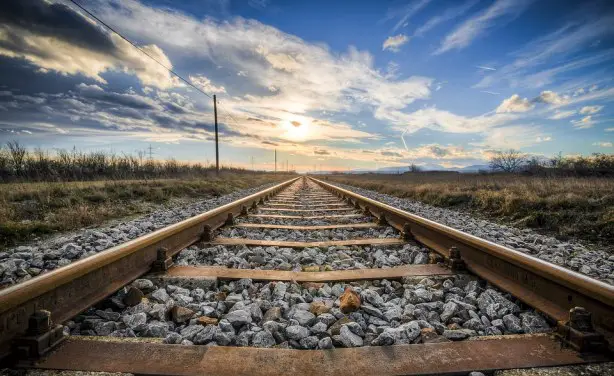The construction of the US$ 9.5bn Trans-Kalahari railway that is aimed at connecting Botswana’s Mmamabula coal fields to Walvis Bay in Namibia is yet to commence. Plans for the implementation of the project first surfaced back in 2010. This is when the Governments of the two republics entered into a Memorandum of Understanding to facilitate its development.
Also Read: Windhoek to Hosea Kutako International Airport Road Project in Namibia to be Completed in 2024
Four years later, the two governments signed a Bilateral Agreement on the development of the 1500km line. The agreement also covered the development of the rails associated coal storage, conveying, loading, and other ancillary facilities. This same year, Leevi Hungamo revealed that tendering of the feasibility study for the Trans-Kalahari railway construction was expected to begin. Hungamo was the then National Planning Commission (NPC) Permanent Secretary in Namibia. According to him, the report would be ready by the following year.
Meanwhile, the two governments were working on logistics and setting up the project management office. In April 2015, the Trans-Kalahari Railway (TKR) Project Management Office (PMO) finally opened in Windhoek. The office would spearhead the implementation of the project.
In 2021, PCSB&SE expressed concern to the Botswana Railways (BR) over the delayed implementation of the railway project. PCSB&SE is the Parliamentary Committee on Statutory Bodies and State Enterprises in Botswana. However, nothing substantial was given in response to the concerns. BR through its CEO Leonard Makwinja said that the Ministry of Transport and Communications was in a better position to address the concerns.
An overview of the Trans-Kalahari railway project
The Trans-Kalahari railway project involves the construction of a new line from Botswana to Walvis Bay in Namibia. In addition, it involves a complete rehabilitation of the TransNamib line. The rehabilitation works will be carried out from Gobabis, through the capital, Windhoek, to the new port at Walvis Bay.
The 1,500km railway line will traverse the vast semi-arid, sandy savannah of the Kalahari desert, hence the name “Trans-Kalahari railway”. It mirrors the existing Trans-Kalahari Highway or corridor that links Botswana to Walvis Bay. However, unlike the railway line, the corridor stretches 1,900km. It traverses Walvis Bay through Windhoek, Gaborone in Botswana, and Johannesburg to Pretoria in South Africa.
The project will be developed through a public-private partnership approach based on a DBOOT contractual arrangement. Under this arrangement, a developer undertakes the financing, design, construction, operation, and maintenance of the project.
Upon completion, the Trans-Kalahari railway is expected to allow the export of up to 65 million tonnes of coal a year from Botswana through Walvis Bay. As a result, this would unlock the value of coal mining in the South African country and power generation in the entire region.
Moreover, the railway will expand freight capacity on congested transport corridors within the Southern African Development Community (SADC). It is also expected to provide greater access to global markets for other landlocked countries in the region. These countries include Malawi, Zambia, and Zimbabwe.


Will this be purely a freight railway? Will there be no facilities for passengers?
Thank you Ditiro Rukamba for the words well articulated, people seem to be negative about things they don’t understand, if there’s a road that is running where the railway line is envisaged to run, what makes the environmental impact different. Others just rush to criticize having not read the article with much attention, it says the railway line budget is US$9.5 billion , NOT 9.5millon. Why do people feel certain things are not for some people in this world. We need that railway line big time. Thank you once again Ditiro.
Its 9.5bn usd not 9.5mil read people
Aurecon Australia were involved a couple of years back
There is already a road so yes bushmen and wild life will be affected but not significantly more than they are currently affected by the road.
I assume the correct cost of the TKC to be US$9.5 billion.
The original plan for coal was about 1,500 km of track. For US$ 9.5m – no way !
we already have a Trans Kalahari Highway which is on the exact route the railway is going to be built,so it will affect them the same way the road did.we need this railway to access the sea(we are landlocked) so a little inconvinience to us won’t deter us from building it.you have underground railway lines and highspeed trains how did they affect you when they were built?
One would like to know how Bushmen and wildlife are affected by a high handed project like this.
The figures cannot be correct. US$ 9.5 million is less than the consulting fee for a project of this scope.
Who is the consulting eng.on the project?